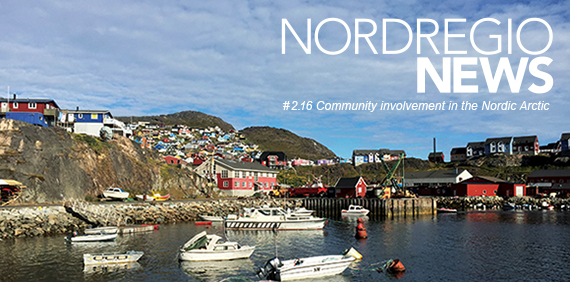How can we plan for a sustainable future and who should be involved in the planning? The regional policy in the Nordic Arctic faces a number of challenges which has been addressed through a thematic broad and profound study carried out by Nordregio and the Nordic Working Group on Sustainable Development in the Arctic.
What characterise rural communities in the Nordic Arctic?
The diversity among rural communities in the Nordic Arctic is impressive when it comes to social, environmental and economic parameters. From popular tourist attractions to large scale industrial operations based on forestry, mining, or oil to massive fishing businesses and aqua farming to small innovative entrepreneurs building new IT tools or creative entrepreneurs organising big cultural festivals.
Looking at the statistic indicators on demography many communities in the Nordic Arctic regions experience outmigration of young people and women, along with the ageing population left behind, leading to an overall population decline in rural communities. An overview of the regional gross value added (GVA) in the Nordic Arctic shows a high dependence on primary industries compared to the Nordic average. Activities such as fishing, agriculture, forestry or mining are characteristic for the labour market which in some cases makes the communities more economically vulnerable and in some cases make it difficult to attract new human resources adding new qualifications and competences to the local development.
The level of educational attainment outside the urban centres, compared to the Nordic average, is low in large parts of the Nordic Arctic with the exception of northern Sweden and northern Finland. Small cities and communities rarely offer the youth educational opportunities after secondary school. Young people are, therefore, the most mobile population group and the dispersed settlement can be seen as a societal structure giving an incentive for the youth to move at a certain age if they wish to pursue an education.
Many young people explain that they choose education from their interests and accept being mobile as a consequence of their choice.
Harsh climate conditions and for some areas a scarce infrastructure also impact the Nordic Arctic. Among the West Nordic countries there is a high dependency of boat and flight connections and there are no direct flight connections between the capitals in the three countries. For the North Calotte regions the need for an integrated cross-border transport plan supporting the transportation of goods and the airfare running between Oulu, Luleå and Tromsø. An important characteristic of the Nordic Arctic is the indigenous people. In Sápmi reindeer herding is an important activity which often is combined with a growing tourism industry involving museums, cultural events, outdoor cultural sites and places where Sami handicrafts are sold. The tourism in Greenland has been facilitated by Air Iceland opening up a number of routes to a number of locations.
The West Nordic countries are together with Northern Norway also popular destinations for cruise tourism. Big cruise ships with up to 5000 passengers visit small villages for a couple of hours before continuing the fare.
What is the approach of the Nordic working group for sustainable regional development in the Arctic?
Funded by the Nordic Council of Ministers the Nordic working group for sustainable regional development in the Arctic has been working on collecting, processing and analysing information for future development to contribute to the political debate and provide scientific knowledge with more weight and a more holistic character.
Through the focus on socio economic regional sustainability the objective is to identify the interests and perspectives on future development for communities. The working group has highlighted social and natural resources – both natural, economic and human related – that can be expected to have a decisive influence on regional development in the Arctic over the next ten, twenty and thirty years. The methodological approach towards this is conducting a Foresight Analysis to develop future visions related to the demographic changes, local and regional innovation potentials and development models. The foresight analysis will also intersect and be influenced by local and regional governance structures and a core element is the business development generated by the local participation.
To give the participating communities and regions an opportunity to articulate their future visions a bottom-up approach has been applied. As illustrated on figure XX there is synergy between the fields covered by the Foresight analysis.
What are the implications for future social sustainability?
The results from the Foresight Analysis driven by the ‘bottom-up’ conducted in rural areas of Northern Finland, Northern Sweden, Northern Norway, Faroe Islands, Iceland and Greenland identified a number of issues the local inhabitants perceive to be important factors in their everyday life for their community to thrive. The overall themes highlighted by the citizens’ are infrastructure, education and skills development, job creation and business development and the importance of cultural and social activities.
Infrastructure
The need for infrastructural development varies with the coastal communities often being the most isolated being highly dependent on boat and ferry connections. Lack of an affordable high speed internet connection was also raised as an issue several places. By improving the infrastructure import and export to the outside world will become cheaper and easier.
Article continues below


